The Complex Path to Space Exploration
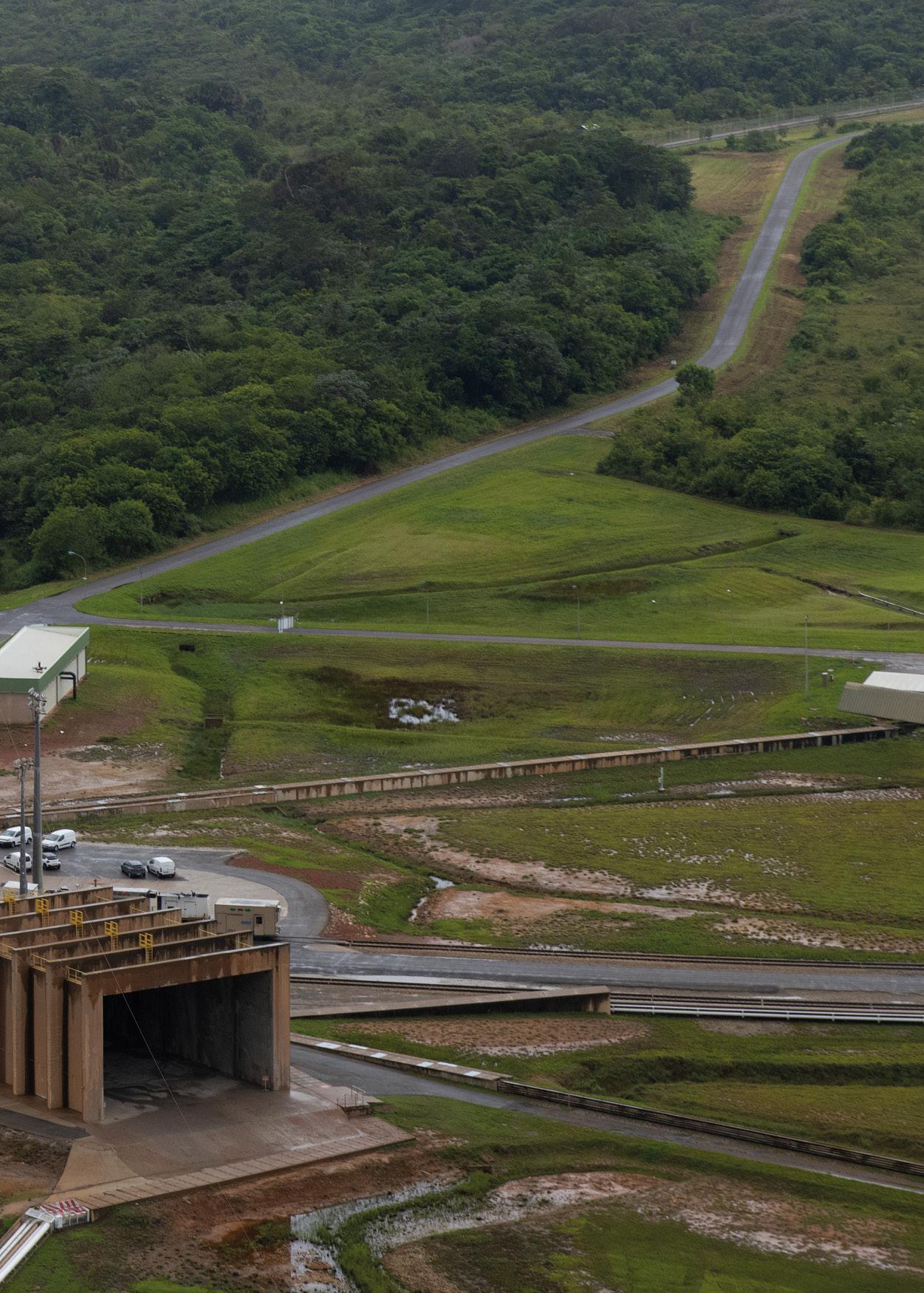
The 2020s are seeing a surge of major space exploration missions. High profile launches mean that names such as James Webb, Juice and Artemis are known beyond the space, science and engineering communities. However, the success of these missions relies on a huge amount of research and development that often goes unnoticed. OpenSpace spoke to Ilaria Roma from the European Space Agency to discover some of the essential factors that contribute to making space exploration missions a success.
On Christmas Day 2021, people around the world took a break from their seasonal celebrations to watch a rocket shoot into space. No humans were on board, but the Ariane 5 launch still captured the imagination of many, as it carried with it the James Webb Space Telescope – the largest telescope ever to be sent into space. Since then, we have witnessed the launch of Juice, the pioneering mission to Jupiter and its icy moons, where it will look for signs of life, and the first major spaceflight in the Artemis programme that will establish a human presence on and around the Moon.
Few of those watching those launches will have had any idea of the long gestation periods involved. For the James Webb Space Telescope, for example, the first studies were done in the 1980s and construction started in 2004. Juice was chosen in 2012 as the first large-class mission in the European Space Agency’s (ESA’s) Cosmic Vision 2015-2025 programme, but studies had already been undertaken to understand the challenges and requirements presented by the Jovian environment. Meanwhile, although the Artemis programme was formally established in 2017, essential preparatory work had been carried out as part of previous programmes, and much research is still
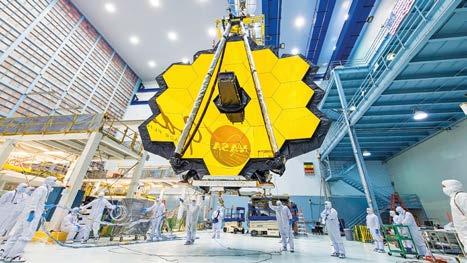
underway to address many issues, especially those that are specific to crewed missions.
ESA’s exploration roadmap
ESA’s formal position on space exploration is set out in the Terrae Novae 2030+ Strategy Roadmap, published in June 20221. This outlines three top objectives:
• Create new opportunities in low Earth orbit for Europe in the era after the International Space Station
• Enable the first European to explore the Moon’s surface by 2030 as a step towards sustainable lunar exploration in the 2030s
• Prepare the goal of Europe being part of the first human mission to Mars.
ESA's Juice mission will make detailed observations of Jupiter and its three large ocean-bearing moons, Ganymede, Callisto and Europa, with a suite of remote sensing, geophysical and in situ instruments.

Importantly, the Roadmap takes into account the need for European resilience and autonomy in the face of geopolitical instability, and is designed to be flexible and achievable. Many issues still need to be resolved however, such as Europe’s limited access to rocket launchers and total lack of independent human launch capacity.
The Roadmap was followed by the publication in March 2023 of Revolution Space: Europe’s Mission for Space Exploration2, a report from the High Level Advisory Group (HLAG) on Human and Robotic Space Exploration for Europe. HLAG includes leaders across industry, government, academia and civil society who are charged with providing an independent and objective assessment on the geopolitical, economic and societal relevance of human and robotic space exploration for Europe.
Speaking at the Paris Air Show 2023, ESA Director General Josef Aschbacher described Revolution Space as “A wake-up call for Europe in the sense of what Europe should do in exploration, both human and robotic, which are intrinsically related – you need both to do exploration.”
Revolution Space may have raised many questions, but there has long been extensive activity in Europe
around space exploration, which produces incredible insights and, importantly, returns solid financial benefits as well as inspiration for future generations.
The power of concurrent design
As with many ESA spacecraft, its exploration missions typically start their lives in ESA’s Concurrent Design Facility (ESA CDF). Here, anything from top level concepts to more fully-fledged ideas are examined in order to identify what is feasible and where technology developments need to be implemented in order to enable a mission to progress.
At the ESA CDF, experts in all the relevant key areas sit down together to establish the boundary conditions for a mission – such as its destination and target activities – and then pool their expertise to establish a mission concept and the required course of action to realise it. They may also investigate scenarios involving different partnership options, because cooperation with other space agencies can enable more ambitious endeavours; however, this can have a significant impact across the design, development, manufacture and operation of a mission.
Ilaria Roma, Head of ESA’s Systems and Concurrent Engineering Section, explains: “The design of space exploration missions includes a lot of unknowns.

Thinking ‘out of the box’ and being creative is therefore valued more than for other types of missions where the heritage from earlier missions and reuse of what we already know allows for faster and cheaper solutions.
“Design teams have to make many assumptions, which are very attentively discussed, agreed and documented as they represent the conditions for the validity of the overall design. One crucial outcome of the CDF studies on exploration missions is the list of required technology developments, and this gets injected into the Agency’s plans, so everything can be ready on time.”
The ESA CDF will celebrate its 25th anniversary in November 2023 and some current missions can trace their heritage a long way back in the Facility’s history. The second ever study at the ESA CDF, in 1999, was on Solar Orbiter, which was finally launched in 2020.
“It is hardly ever that a single study leads immediately to a mission,” explains Ilaria Roma. “For Juice, for example, there were studies done before the proposal was made, and then more afterwards because the scope changed and the mission itself changed, as well as the cooperation setting. These modifications invalidated some of the aspects we had previously looked at. Similarly with crewed missions studied
in the CDF – the plans have changed since we first looked at this from a European perspective, therefore additional studies had to be conducted to check design validity.
“Often we have to do multiple studies because if we look from the mission concept and architecture point of view, exploration missions are more complex than, for example, an Earth observation satellite (although Earth observation mission instruments can be extremely complex!). Also, human missions and ones such as ExoMars or Mars Sample Return are extremely complicated, because we have to not only characterize the environment – which brings several uncertainties – but also work out how to land a rover safely or consider a whole range of extra parameters [specific to human needs].”
Sometimes missions in development may find themselves back in the ESA CDF because the boundary conditions have changed. For example, the current ExoMars mission was due to use a Russian launcher and a Russian descent module to deliver the European rover to the Martian surface, but this was suspended due to the Russian invasion of Ukraine in 2022. This means everything about the design will have to be checked again, including the launch date.
In addition, revising a mission’s launch date means the relative positions of the planets will have changed, which has an impact on the trajectories to reach a target and on the required amounts of propellant, which in turn affects the tank size and therefore the overall structure. And when a spacecraft’s structure changes, this may change its mass and thus its inertia. “Changes such as this have a cascading effect on the overall system,” notes Ilaria Roma. “This is the kind of occurrence that is well addressed by the CDF.”
Propulsion and power
Among the factors that will always be addressed for any exploration mission is the power requirement, both for propulsion and for operating the onboard instruments.
“From an engineering perspective, when you are leaving Earth and going somewhere else, there are a load of different kinds of design drivers that you have to think about compared with Earth observation, GNSS [global navigation satellite system] or telecommunications satellites,” says Adam McSweeney, Systems Engineer for Future Exploration Missions, working for ESA.
“Some of the main design drivers relate to propulsion. For a Mars mission, we would need substantial propulsion systems on board and these impact the design because of the need to accommodate the fuel tanks and propellant, and so on. As you travel away from the Sun, the solar radiation received by any spacecraft falls, so you may need to increase the size of the solar panels.”
temperature (LILT) conditions to find the optimum design. The end result was that Juice has around 24,000 solar cells across 85 square metres of solar panels.
Radiation
Mitigating against various types of radiation is a particularly complicated aspect of space exploration. The radiation environment varies according to the type of mission (including whether or not it carries a human crew), the destination, the route taken to reach the target and its final orbit. Among the issues that have to be considered are the type and energy of the particles, and their abundancy.
One major source of radiation is the Sun. Solar flares can emit energetic protons, heavy ions and electrons that can penetrate shielding and damage components. Then there are two radiation belts around the Earth, known as the Van Allen Belts, formed of particles trapped by the Earth’s magnetosphere: an inner one of protons and an outer one which is mainly electrons. Radiation belts are also found around Uranus, Neptune, Mercury, Jupiter and Saturn, and this has to be taken into account for any mission travelling to those planets or passing close by during flybys.
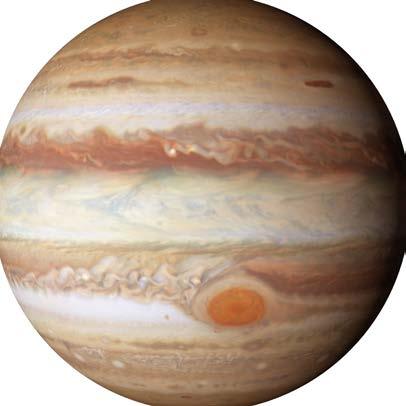
At Jupiter, for example, the Sun provides just 3% of the illumination we receive here on Earth. It is also very cold, requiring Juice’s solar panels to be able to operate at temperatures as low as 30° above absolute zero, and any flaws that might be insignificant in a panel used on Earth could be disproportionately large in Jovian conditions. Candidate solar cells therefore had to be tested in low intensity, low
Jupiter’s magnetic field is the strongest in the solar system, making its radiation belts much more dangerous than Earth’s; the most energetic parts of these belts are effectively nogo zones for humans or robotic explorers. Jupiter’s moon Ganymede also has a magnetic field that interacts with Jupiter’s, which complicated the modelling for the Juice mission.
Another source of potentially damaging radiation is galactic cosmic rays. Most are atomic nuclei: protons are most common, but nuclei of elements up to uranium have been detected. Not only does this make them far more massive than electrons, but they move at nearly the speed of light and can have energies up to 10 giga-electron volts.
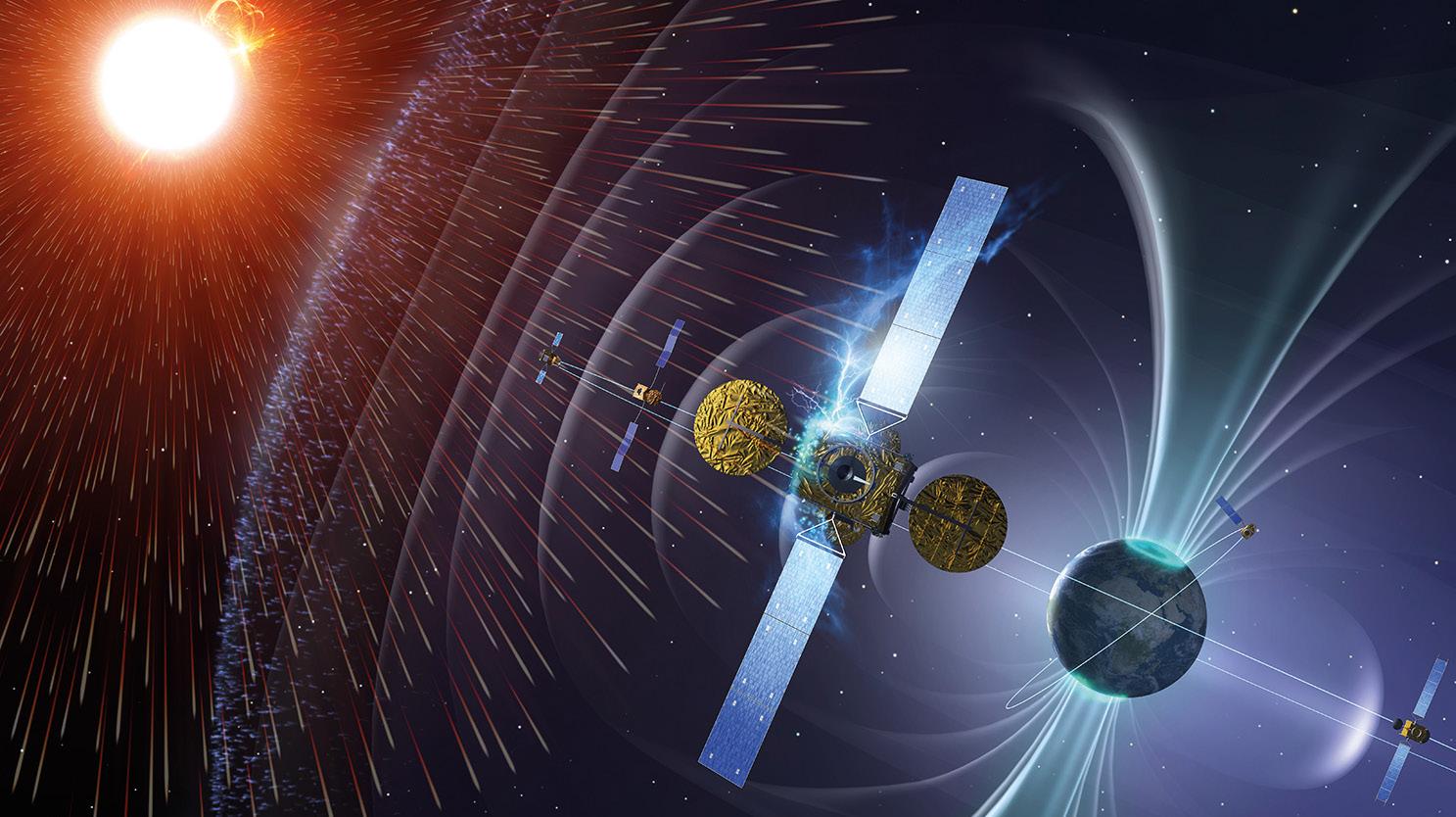
“Different particles interact with materials in different ways, so the shielding strategies have to be optimized depending on the environment,” notes Marco Vuolo, Space Environment and Effects Engineer who works at ESA. “Even one high energy ion can produce a densely ionized track in a semiconductor. This ionization may cause a highly localized effect on the component, such as a glitch in the output, errors in memories and potentially destructive events such as latch-up burnout. In the design we have to take into account all of the potential failure rates for each component for each different effect, and mitigate this by using additional shielding, redundancy and/or radiation tolerant components, or by improving the design.
“Often there is no zero failure option, but we want to keep the rate as low as possible. For this we design according to ECSS [European Cooperation for Space Standardization] standards that set the margins we should adhere to, and all possible failure probabilities have to be included and propagated in the FMECA [failure mode, effects and criticality analysis].”
Finding materials that can efficiently stop the different kinds of particles is not an easy task. For example, the heavy ions from cosmic rays can produce fragments and a shower of secondary particles when they hit
‘high-Z’ (high atomic number) materials like lead. Instead, research shows that lighter elements, such as carbon and hydrogen, are better for shielding due to the ratio between the stopping power and the generation of secondary particles. However, a larger shielding volume would then be required because of the lower density of such materials.
Marco Vuolo explains that one potential approach is to use polymers, for instance polyethylene, which has a high hydrogen content. Another solution that is being researched is to use materials that would provide a secondary function in the spacecraft, perhaps as a structural component, or more generally for the mission, such as water, fuel supplies or Martian/lunar regolith (for surface missions).
Radiation is also an issue for missions that rely on solar panels, which can degrade over time and gradually produce less energy – something that has to be built into the calculations. The solar panels for Juice will have to withstand its very high radiation environment, which necessitated thicker cover glass, impacting the overall mass of the spacecraft.
Heading in the other direction, solar exploration missions, such as Solar Orbiter, or those that head in that direction for flybys, face significant challenges,
not only from solar flares but also from the ‘solar wind’, which is the result of expanding plasma emitted from the Sun’s corona. This can create a charge on the surface of a spacecraft, including solar panels, which can cause a damaging electrostatic discharge.
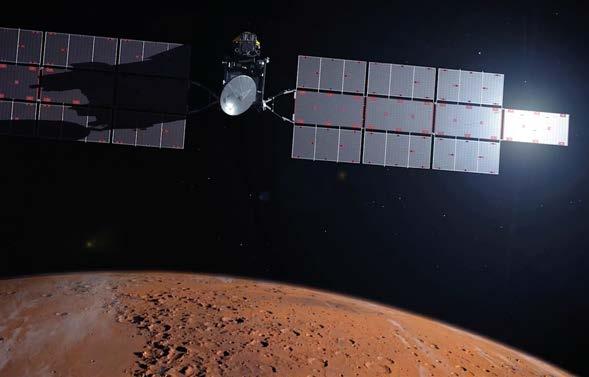
One further problem is micrometeoroids. Depending on their size and speed, they can perforate materials and even change the attitude or rotation of a spacecraft. Just one microparticle impacting solar panels, an exposed pipe or a harness can cause a major problem.
Communications
Communicating with Earth is another vital consideration for space exploration. The distance between Earth and a spacecraft is one factor: for example, data transmissions to or from Juice will take 53 minutes when at its furthest location.
However, the challenge varies for different kinds of mission. Some, such as the James Webb Space Telescope, are located at the same distance from Earth all the time. Planetary missions, on the other hand, are not, because the duration of planetary orbits around the Sun vary and therefore the distance between the Earth and other planets changes all the time.
A good example of this is the future target of crewed expeditions – Mars. In 2003, the two planets were just 56 million kilometres apart, whereas when they are on opposite sides of the Sun, the distance between them can be over 400 million kilometres. In addition, when
all three are in a line with the Sun in the middle, in what is known as a ‘superior conjunction’, the Sun can literally get in the way of communications altogether.
“If we have a robotic mission on Mars, we need to build in some onboard autonomy so it knows what to do when it loses contact with Earth, which could be for a few weeks during conjunction events when the Earth and Mars are on opposite sides of the sun, making direct communications impossible,” explains Adam McSweeney. In such situations, instruments may be turned off and data stored locally to be sent later. For example, in 2023, no communications will be possible between the Earth and Mars from 11 to 25 November during the next solar superior conjunction.
One potential solution being considered is to add a third communications node in the vicinity of Mars, but far enough away that it has a direct line of sight to both Mars and the Earth during any superior conjunction – something that will be far more important when humans are on Mars than it is for robotic craft.
Mars may even get its own communications and navigation constellation in future. “If there are people on Mars, they are going to want high speed internet as a support function for exploration,” points out Adam McSweeney. An example of a potential Mars telecommunications infrastructure is the Mars Communication and Navigation Infrastructure (MARCONI), which was one of last year’s studies in ESA’s CDF.
Contamination
Considerations such as power, radiation and communications all focus on the requirements of the spacecraft and any human passengers. However, the design of planetary missions also has to take into account the possibility of contamination of the target planet or moon, any samples that are brought back and/or the Earth’s biosphere.
“We have to be sure that when we explore space, we do it responsibly,” notes Adam McSweeney. “We put a lot of effort into ensuring that when we send robots to Mars, we do not contaminate the planet with any trace amounts of Earth-based life on the robot’s surface.
However, when we consider sending people – well, in this context people are ‘messy’, as we carry all kinds of germs and bacteria, and you cannot sterilize a human in the same way you can sterilize a robot.”
With this in mind, there are planetary protection regulations and bodies that promote the responsible exploration of solar system bodies. The Committee on Space Research (COSPAR), founded in 1958, issued its COSPAR Policy on Planetary Protection in 2021, which states that: “The conduct of scientific investigations of possible extra-terrestrial life forms, precursors and remnants must not be jeopardized. In addition, the Earth must be protected from the potential hazard posed by extra-terrestrial matter carried by a spacecraft returning from an interplanetary mission.”
The policy describes five categories of solar system body and mission type, which in turn have their own planetary protection requirements. These

range from Category I, which require no protection considerations, to Category V, which comprises all Earth-return missions.
Adam McSweeney explains why Category V missions need special consideration: “For Mars missions, for example, if there is life on Mars, we have to be as close as possible to being 100% certain that when we bring samples back, we do not accidentally contaminate the Earth’s biosphere with unsterilized Mars material, because we have no idea what the impact could be. Even if we think the likelihood is low of there being life on Mars, and that the risk it poses is also low, it still introduces a lot of complexity to the engineering side of a mission such as Mars Sample Return.”
Crewed mission essentials
Missions that carry humans incur a much wider range of design considerations than uncrewed ones. For Mars missions, for example, as Adam McSweeney points out: “The big difference between robotic and
human missions is that we always want to bring the crew home – we do not want to send people on oneway trips. And that comes with considerable cost, because not only do you have all the extra overheads that go with larger payloads required to sustain crewed missions, but you need more fuel for the return journey. That makes the launch requirement and costs vastly higher than for any robotic mission.”
The new wave of proposed crewed missions are significantly different from what we have seen before.
“One big challenge is to run them in a sustained way –this is very different from the Apollo missions decades ago,” says Cecilia Marasini, Gateway Operations Engineer and MAS Technical Area Lead, who works on the Lunar Gateway operations. The Lunar Gateway will be an international outpost orbiting the Moon that will be built as a staging platform for human exploration on and around the Moon. “We are not going to the Moon just to sample rocks; instead, we want to exploit and sustain our exploration of the Moon to support future missions to Mars. For example, it will help us study the effects of the radiation environment on human physiology.
“The challenge is to enable humans to stay in an environment that is relatively ‘rough’ compared with the ISS. We want to have longer lunar sorties to explore the Moon, with operators on Earth able to follow these to keep the crew safe. Another challenge is that the Lunar Gateway will be orbiting the Moon, not the Earth, and needs to be designed to be autonomous for long periods when it has no crew – this is unlike the ISS which always has people on board.”
Radiation protection for humans
Radiation issues cause yet more challenges for crewed missions. Particles in galactic cosmic rays, for example, can cause irreparable damage to human DNA, leading to cancer or leukaemia, and the risk factor rises the longer you are exposed. Solar flares are less prevalent, but when they do happen, they can release huge numbers of particles that can lead to acute radiation syndrome.
Providing shielding that can protect humans completely for a trip to Mars would make the mass of
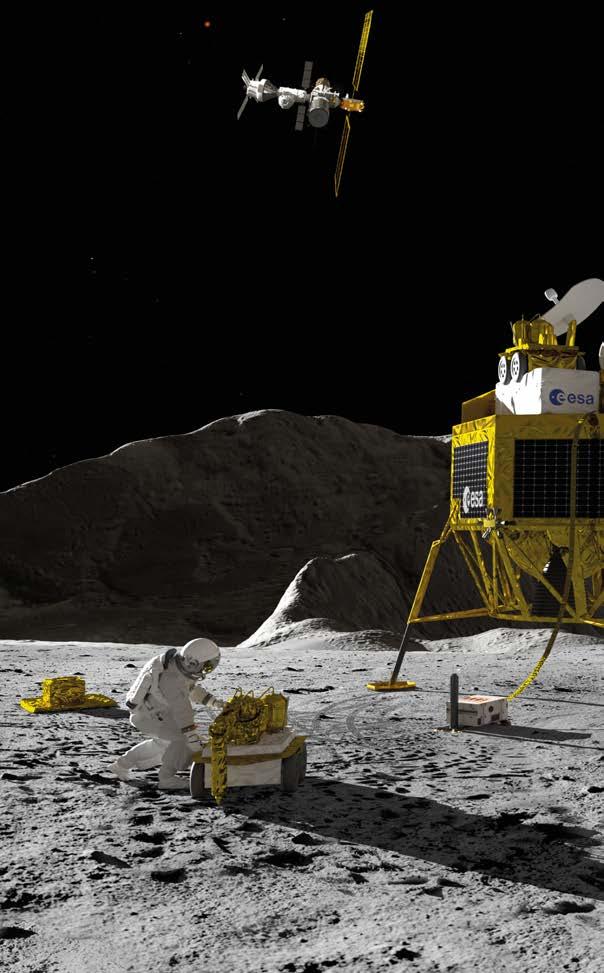
a habitation unit so high that it would not be possible to launch it. Such missions will therefore rely on a combination of dosimeters to monitor the ongoing radiation received by each individual and an area with additional shielding where astronauts can shelter when a warning of a solar flare is received. Another option is radiation vests, which are being researched within the Artemis programme. Once on the Moon or Mars, there are proposals to use in situ resources, i.e. regolith, to build shelters.
ESA’s Ilaria Roma reports that the ESA CDF has been busy carrying out studies for human exploration missions. “Sessions on these will include domain experts covering areas such as safety, environmental control and life support systems. We have to consider issues such as the crew’s health and performance. There are standards for human spaceflight that dictate things like the redundancy required for environmental control and life support (ECLS) functions, and systems
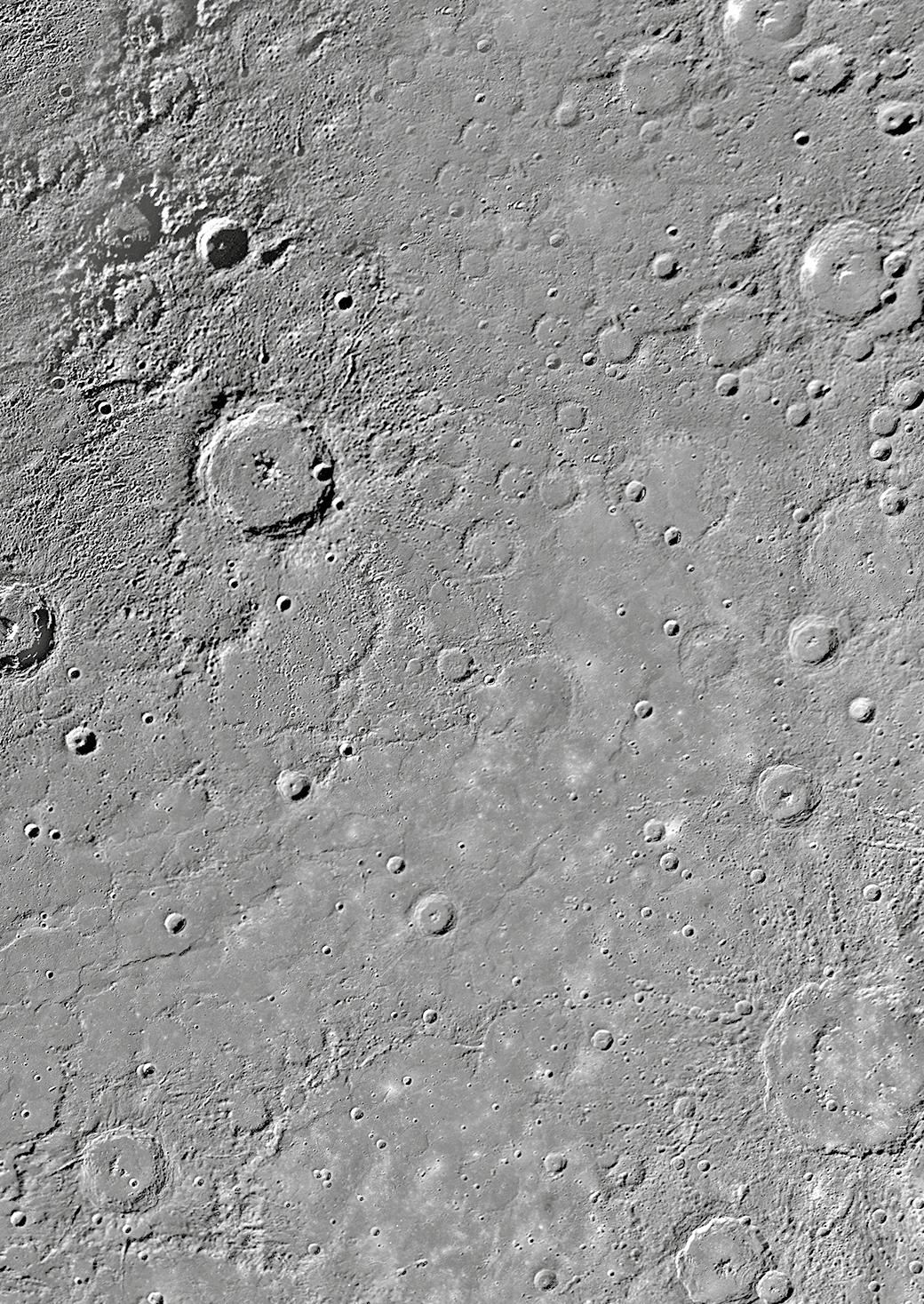

must be highly reliable. Then in addition to aspects such as crew hygiene, clothing and laundry, utensils and dishwashing, consumables, and water and oxygen recovery, we also have to look at areas such as medical, physiology and psychology aspects, which all affect the design.”
ESA CDF studies have even considered the potential for hibernation. Among the benefits, Marco Vuolo says, are: “It reduces the amount of resources needed as humans would need less food and water. From a psychological point of view they do not have to be constantly awake. And you only have to shield a smaller area.”
Europe’s exploration future
The Revolution Space report proposes that European autonomy in space exploration would unlock benefits in four areas: peace, security and cooperation; prosperity and wealth; society and inspiration; and
climate action and sustainability. It challenges Europe to decide what role it wants to play in the space revolution – spectator, customer or leader – and insists that if Europe wants to boost its ambitions in exploration, it cannot afford to wait.
The good news is that there is a wealth of expertise and heritage in Europe in many areas of space exploration. With the positive, bold approach being taken by ESA, we can look forward to more inspiring exploration missions in future, keeping us glued to our screens to watch them launch skywards and expand our space horizons. n
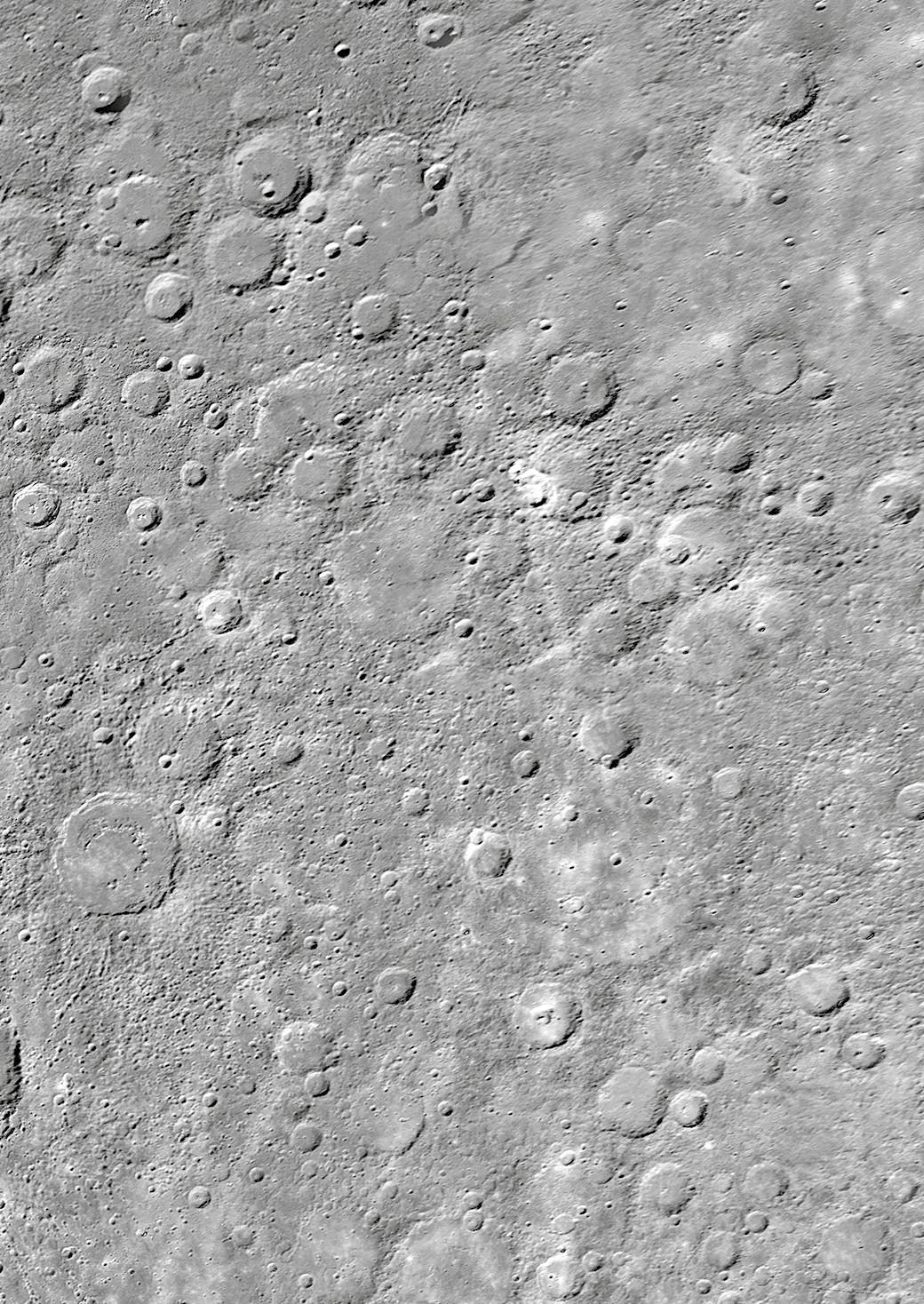
Sources
1. ESA; Terrae Novae 2030+ Strategy Roadmap; June 2022
2. HLAG; Revolution Space: Europe’s Mission for Space Exploration; March 2023
